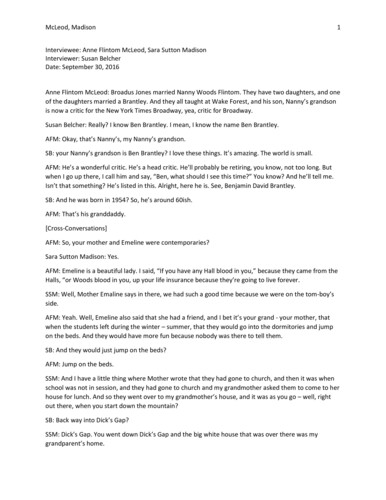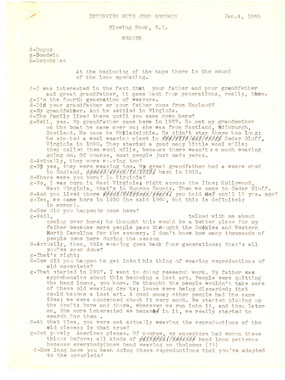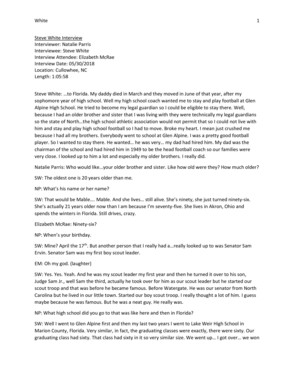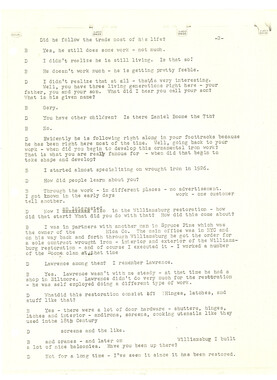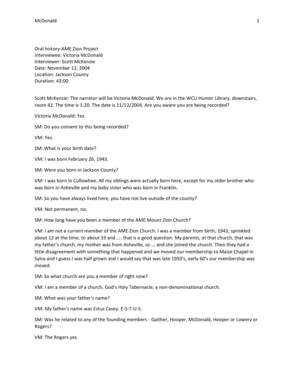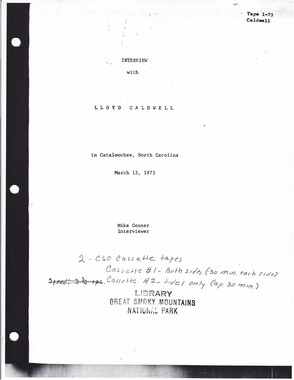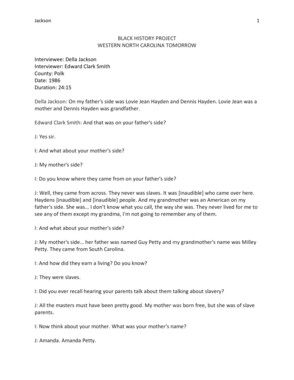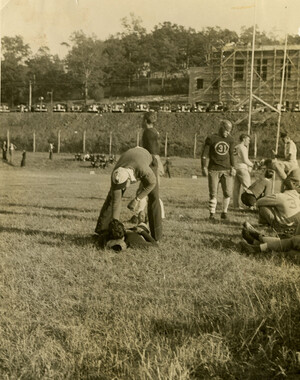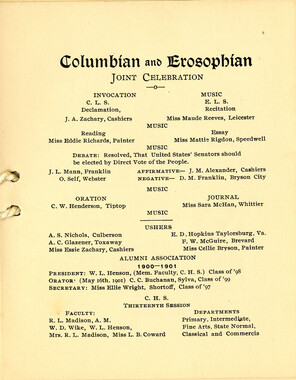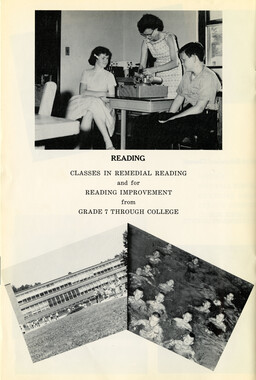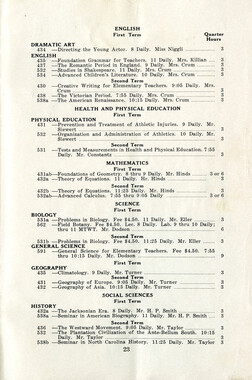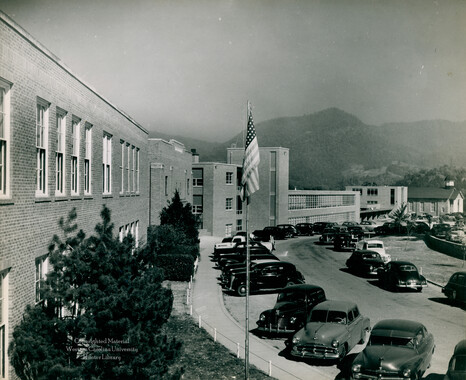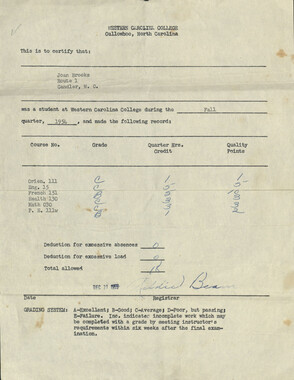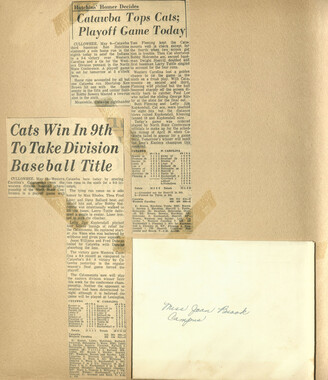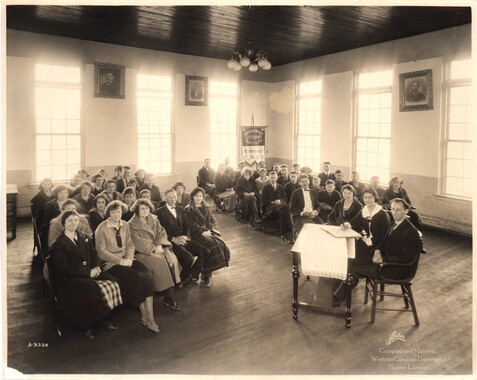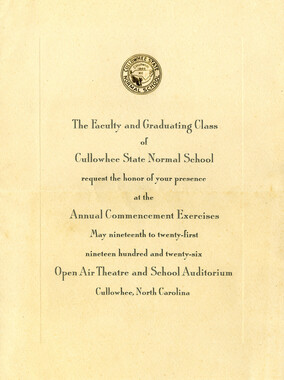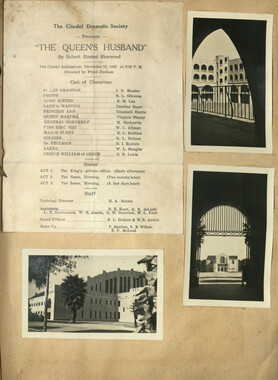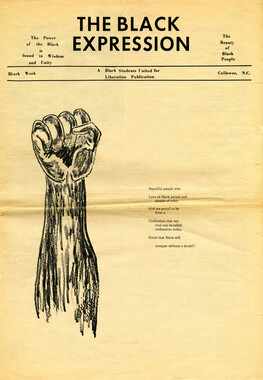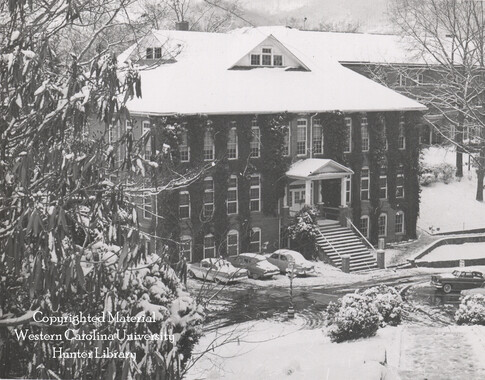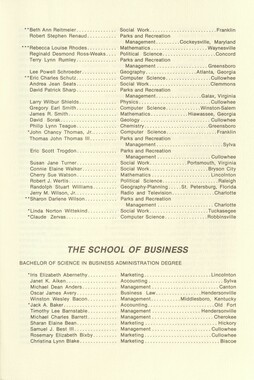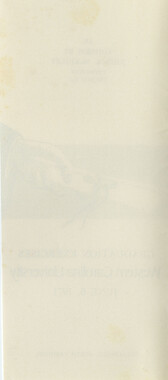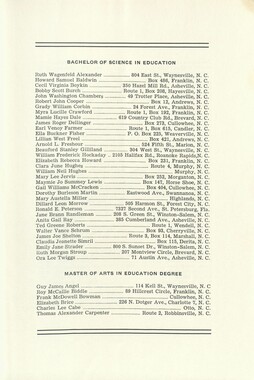Western Carolina University (21)
View all
- Canton Champion Fibre Company (2308)
- Cherokee Traditions (291)
- Civil War in Southern Appalachia (165)
- Craft Revival (1942)
- George Masa Collection (82)
- Great Smoky Mountains - A Park for America (2922)
- Highlights from Western Carolina University (422)
- Horace Kephart (941)
- Journeys Through Jackson (159)
- LGBTQIA+ Archive of Jackson County (85)
- Oral Histories of Western North Carolina (314)
- Picturing Appalachia (6829)
- Stories of Mountain Folk (413)
- Travel Western North Carolina (154)
- Western Carolina University Fine Art Museum Vitreograph Collection (129)
- Western Carolina University Herbarium (92)
- Western Carolina University: Making Memories (738)
- Western Carolina University Publications (2491)
- Western Carolina University Restricted Electronic Theses and Dissertations (146)
- Western North Carolina Regional Maps (71)
- World War II in Southern Appalachia (131)
University of North Carolina Asheville (6)
View all
- Allanstand Cottage Industries (62)
- Appalachian National Park Association (53)
- Bennett, Kelly, 1890-1974 (1463)
- Berry, Walter (76)
- Brasstown Carvers (40)
- Carver, George Washington, 1864?-1943 (26)
- Cathey, Joseph, 1803-1874 (1)
- Champion Fibre Company (233)
- Champion Paper and Fibre Company (297)
- Cherokee Indian Fair Association (16)
- Cherokee Language Program (22)
- Crowe, Amanda (40)
- Edmonston, Thomas Benton, 1842-1907 (7)
- Ensley, A. L. (Abraham Lincoln), 1865-1948 (275)
- Fromer, Irving Rhodes, 1913-1994 (70)
- George Butz (BFS 1907) (46)
- Goodrich, Frances Louisa (120)
- Grant, George Alexander, 1891-1964 (96)
- Heard, Marian Gladys (60)
- Kephart, Calvin, 1883-1969 (15)
- Kephart, Horace, 1862-1931 (313)
- Kephart, Laura, 1862-1954 (39)
- Laney, Gideon Thomas, 1889-1976 (439)
- Masa, George, 1881-1933 (61)
- McElhinney, William Julian, 1896-1953 (44)
- Niggli, Josephina, 1910-1983 (10)
- North Carolina Park Commission (105)
- Osborne, Kezia Stradley (9)
- Owens, Samuel Robert, 1918-1995 (11)
- Penland Weavers and Potters (36)
- Roberts, Vivienne (15)
- Roth, Albert, 1890-1974 (142)
- Schenck, Carl Alwin, 1868-1955 (1)
- Sherrill's Photography Studio (2565)
- Southern Highland Handicraft Guild (127)
- Southern Highlanders, Inc. (71)
- Stalcup, Jesse Bryson (46)
- Stearns, I. K. (213)
- Thompson, James Edward, 1880-1976 (226)
- United States. Indian Arts and Crafts Board (130)
- USFS (683)
- Vance, Zebulon Baird, 1830-1894 (1)
- Weaver, Zebulon, 1872-1948 (58)
- Western Carolina College (230)
- Western Carolina Teachers College (282)
- Western Carolina University (2008)
- Western Carolina University. Mountain Heritage Center (18)
- Whitman, Walt, 1819-1892 (10)
- Wilburn, Hiram Coleman, 1880-1967 (73)
- Williams, Isadora (3)
- Cain, Doreyl Ammons (0)
- Crittenden, Lorraine (0)
- Rhodes, Judy (0)
- Smith, Edward Clark (0)
- Appalachian Region, Southern (2693)
- Asheville (N.C.) (1936)
- Avery County (N.C.) (26)
- Blount County (Tenn.) (195)
- Buncombe County (N.C.) (1672)
- Cherokee County (N.C.) (283)
- Clay County (N.C.) (556)
- Graham County (N.C.) (236)
- Great Smoky Mountains National Park (N.C. and Tenn.) (519)
- Haywood County (N.C.) (3569)
- Henderson County (N.C.) (70)
- Jackson County (N.C.) (4913)
- Knox County (Tenn.) (35)
- Knoxville (Tenn.) (13)
- Lake Santeetlah (N.C.) (10)
- Macon County (N.C.) (420)
- Madison County (N.C.) (215)
- McDowell County (N.C.) (39)
- Mitchell County (N.C.) (132)
- Polk County (N.C.) (35)
- Qualla Boundary (982)
- Rutherford County (N.C.) (76)
- Swain County (N.C.) (2182)
- Transylvania County (N.C.) (270)
- Watauga County (N.C.) (12)
- Waynesville (N.C.) (86)
- Yancey County (N.C.) (72)
- Aerial Photographs (3)
- Aerial Views (60)
- Albums (books) (4)
- Articles (1)
- Artifacts (object Genre) (228)
- Bibliographies (1)
- Biography (general Genre) (2)
- Cards (information Artifacts) (38)
- Clippings (information Artifacts) (191)
- Copybooks (instructional Materials) (3)
- Crafts (art Genres) (622)
- Depictions (visual Works) (21)
- Design Drawings (1)
- Drawings (visual Works) (185)
- Envelopes (73)
- Exhibitions (events) (1)
- Facsimiles (reproductions) (1)
- Fiction (general Genre) (4)
- Financial Records (12)
- Fliers (printed Matter) (67)
- Glass Plate Negatives (381)
- Guidebooks (2)
- Internegatives (10)
- Interviews (815)
- Land Surveys (102)
- Letters (correspondence) (1013)
- Manuscripts (documents) (618)
- Maps (documents) (177)
- Memorandums (25)
- Minutes (administrative Records) (59)
- Negatives (photographs) (6090)
- Newsletters (1290)
- Newspapers (2)
- Notebooks (8)
- Occupation Currency (1)
- Paintings (visual Works) (1)
- Pen And Ink Drawings (1)
- Periodicals (193)
- Personal Narratives (10)
- Photographs (12976)
- Plans (maps) (1)
- Poetry (5)
- Portraits (4568)
- Postcards (329)
- Programs (documents) (181)
- Publications (documents) (2443)
- Questionnaires (65)
- Relief Prints (26)
- Sayings (literary Genre) (1)
- Scrapbooks (282)
- Sheet Music (2)
- Slides (photographs) (402)
- Songs (musical Compositions) (2)
- Sound Recordings (796)
- Specimens (92)
- Speeches (documents) (18)
- Tintypes (photographs) (8)
- Transcripts (322)
- Video Recordings (physical Artifacts) (23)
- Text Messages (0)
- A.L. Ensley Collection (275)
- Appalachian Industrial School Records (7)
- Appalachian National Park Association Records (336)
- Axley-Meroney Collection (2)
- Bayard Wootten Photograph Collection (20)
- Bethel Rural Community Organization Collection (7)
- Blumer Collection (5)
- C.W. Slagle Collection (20)
- Canton Area Historical Museum (2110)
- Carlos C. Campbell Collection (462)
- Cataloochee History Project (64)
- Cherokee Studies Collection (4)
- Daisy Dame Photograph Album (5)
- Daniel Boone VI Collection (1)
- Doris Ulmann Photograph Collection (112)
- Elizabeth H. Lasley Collection (1)
- Elizabeth Woolworth Szold Fleharty Collection (4)
- Frank Fry Collection (95)
- George Masa Collection (173)
- Gideon Laney Collection (452)
- Hazel Scarborough Collection (2)
- Hiram C. Wilburn Papers (28)
- Historic Photographs Collection (236)
- Horace Kephart Collection (861)
- Humbard Collection (33)
- Hunter and Weaver Families Collection (1)
- I. D. Blumenthal Collection (4)
- Isadora Williams Collection (4)
- Jesse Bryson Stalcup Collection (47)
- Jim Thompson Collection (224)
- John B. Battle Collection (7)
- John C. Campbell Folk School Records (80)
- John Parris Collection (6)
- Judaculla Rock project (2)
- Kelly Bennett Collection (1482)
- Love Family Papers (11)
- Major Wiley Parris Civil War Letters (3)
- Map Collection (12)
- McFee-Misemer Civil War Letters (34)
- Mountain Heritage Center Collection (4)
- Norburn - Robertson - Thomson Families Collection (44)
- Pauline Hood Collection (7)
- Pre-Guild Collection (2)
- Qualla Arts and Crafts Mutual Collection (12)
- R.A. Romanes Collection (681)
- Rosser H. Taylor Collection (1)
- Samuel Robert Owens Collection (94)
- Sara Madison Collection (144)
- Sherrill Studio Photo Collection (2558)
- Smoky Mountains Hiking Club Collection (616)
- Stories of Mountain Folk - Radio Programs (374)
- The Reporter, Western Carolina University (510)
- Venoy and Elizabeth Reed Collection (16)
- WCU Gender and Sexuality Oral History Project (32)
- WCU Mountain Heritage Center Oral Histories (25)
- WCU Oral History Collection - Mountain People, Mountain Lives (71)
- WCU Students Newspapers Collection (1923)
- Western North Carolina Tomorrow Black Oral History Project (69)
- William Williams Stringfield Collection (2)
- Zebulon Weaver Collection (109)
- African Americans (390)
- Appalachian Trail (35)
- Artisans (521)
- Cherokee art (84)
- Cherokee artists -- North Carolina (10)
- Cherokee language (21)
- Cherokee pottery (101)
- Cherokee women (208)
- Church buildings (190)
- Civilian Conservation Corps (U.S.) (111)
- College student newspapers and periodicals (2012)
- Dams (107)
- Dance (1023)
- Education (222)
- Floods (61)
- Folk music (1015)
- Forced removal, 1813-1903 (2)
- Forest conservation (220)
- Forests and forestry (1195)
- Gender nonconformity (4)
- Great Smoky Mountains National Park (N.C. and Tenn.) (181)
- Hunting (45)
- Landscape photography (25)
- Logging (119)
- Maps (83)
- Mines and mineral resources (8)
- North Carolina -- Maps (18)
- Paper industry (38)
- Postcards (255)
- Pottery (135)
- Railroad trains (72)
- Rural electrification -- North Carolina, Western (3)
- School integration -- Southern States (2)
- Segregation -- North Carolina, Western (5)
- Slavery (5)
- Sports (452)
- Storytelling (243)
- Waterfalls -- Great Smoky Mountains (N.C. and Tenn.) (66)
- Weaving -- Appalachian Region, Southern (280)
- Wood-carving -- Appalachian Region, Southern (328)
- World War, 1939-1945 (173)
Interview with Sara Madison and Anne McLeod
Item
Item’s are ‘child’ level descriptions to ‘parent’ objects, (e.g. one page of a whole book).
-
-
McLeod, Madison 1 Interviewee: Anne Flintom McLeod, Sara Sutton Madison Interviewer: Susan Belcher Date: September 30, 2016 Anne Flintom McLeod: Broadus Jones married Nanny Woods Flintom. They have two daughters, and one of the daughters married a Brantley. And they all taught at Wake Forest, and his son, Nanny’s grandson is now a critic for the New York Times Broadway, yea, critic for Broadway. Susan Belcher: Really? I know Ben Brantley. I mean, I know the name Ben Brantley. AFM: Okay, that’s Nanny’s, my Nanny’s grandson. SB: your Nanny’s grandson is Ben Brantley? I love these things. It’s amazing. The world is small. AFM: He’s a wonderful critic. He’s a head critic. He’ll probably be retiring, you know, not too long. But when I go up there, I call him and say, “Ben, what should I see this time?” You know? And he’ll tell me. Isn’t that something? He’s listed in this. Alright, here he is. See, Benjamin David Brantley. SB: And he was born in 1954? So, he’s around 60ish. AFM: That’s his granddaddy. [Cross-Conversations] AFM: So, your mother and Emeline were contemporaries? Sara Sutton Madison: Yes. AFM: Emeline is a beautiful lady. I said, “If you have any Hall blood in you,” because they came from the Halls, “or Woods blood in you, up your life insurance because they’re going to live forever. SSM: Well, Mother Emaline says in there, we had such a good time because we were on the tom-boy’s side. AFM: Yeah. Well, Emeline also said that she had a friend, and I bet it’s your grand - your mother, that when the students left during the winter – summer, that they would go into the dormitories and jump on the beds. And they would have more fun because nobody was there to tell them. SB: And they would just jump on the beds? AFM: Jump on the beds. SSM: And I have a little thing where Mother wrote that they had gone to church, and then it was when school was not in session, and they had gone to church and my grandmother asked them to come to her house for lunch. And so they went over to my grandmother’s house, and it was as you go – well, right out there, when you start down the mountain? SB: Back way into Dick’s Gap? SSM: Dick’s Gap. You went down Dick’s Gap and the big white house that was over there was my grandparent’s home. McLeod, Madison 2 SB: The one that’s almost falling in now? SSM: Yeah, I guess so. SB: I love that house. You can tell… Unknown: Is it still there? Is that one still there, Sara? SSM: Well, when my grandmother dies, she willed it to her. She had a half – she had a son who was a Hampton. And she had to go… She was… And she taught for Mr. Madison too. This is all, you know, it’s just so mixed up that it’s… But, anyway, Miss Flintom and Emeline went to eat lunch with my grandmother, and then when they came home they asked Mother to come back with them. And she did, and then she realized she was going to be in that big house, you know, Davies Hall, with, just with Miss Flintom and Emeline, I guess. AFM: And Mary, maybe. SSM: And Mary, probably. And she said that she got frightened. And thought, “Oh gosh, we’ll be over there all by ourselves in that big house.” And she said that Miss Flintom said, “Oh, you mustn’t think that way.” She said, “There’re no ghosts, or there’s nobody who’s going to get you in that house. You’ll be okay.” SB: And how old was your mama at that time? SSM: Well, I would say she was about eight, or nine, or ten. Somewhere in there. But she, she always felt real special about Davies Hall because she had spent the night there with Emeline, and then she went back and took some classes there. You know there was a parlor downstairs in Davies Hall? SB: With the piano? The parlor with the piano? Uh huh. SSM: See, we were living upstairs when that was going on, the parlor, and they have a music class in that room down there. We called it a parlor. AFM: Oh yeah, my grandmother had a parlor. SSM: And there were some old pictures in that room down there that I always wondered what happened to them. They were etchings, and really strange etchings, with trees and, they were scary. [Laughter] AFM: It’s a challenge. It might mean something. SSM: And I always tried to find them later. I thought they might be in Moore. And that was also a wonderful place. SM: Ask Jason. He’ll find them for you. Jason and Liz will go hunt them up. SSM: Oh. Moore was the mother that talked about it, and one thing that she wrote was she said, “Such an elegant building.” And when we lived in Davies Hall, Moore was the place that… Everything social took place in Moore. They… SB: Have you seen Moore? McLeod, Madison 3 AFM: Did you ride me by that? SB: Not really. They call it offline. It’s not used now. As of a couple of years ago they used to do nursing classes, but when they… AFM: You rode us by that building. SB: It’s a beautiful building. And now, the Foundation Board and the Board of Trustees are determining what they’re going to do with that building. But it has such historic meaning to campus. AFM: It’s brick. SB: It’s brick and it has arched windows… AFM: Yea. You rode us by that. SB: …and it has a portico. It’s a front that looks down, over across to Madison, and into the woodland, they call it the “Woodland Stage.” And that was basically, when Sara was here that was the whole campus. When your grandmother was here. SSM: And Joyner Building was… SB: Was there. AFM: Was there. SB: And that was the whole campus, basically. AFM: And that was the campus. Unknown Speaker: Well, I’m taking Miss Sara home so, we can ride over and you can… AFM: I’d love to see it Unknown Speaker: …and you can point it out to us, because I don’t know all the… SB: You can only see it from the side, and it’s quite covered with trees now. I’m always wishing they would kind of just trim the trees a little bit. [Simultaneous speaking and group views an image] SSM: This is the hill, up there. This was… Well, that’s Davies, and this the old Madison Building. AFM: Isn’t that beautiful? SSM: It was still there when I was living in Davies Hall. Because I remember going over there one time. SB: Old Madison was there? AFM: And what was this building then? SSM: That’s the Baptist Church. Unknown Speaker: Is that the current Baptist Church? McLeod, Madison 4 SSM: No, but that’s where it was. Oh, and this was… My grandmother and granddaddy lived in this place, right here. It was called a commissary, and… [Simultaneous Speaking] SB: Jason, do you know where the commissary was? I have always wondered where the commissary was. It was a white building, and I’ve never known exactly where it was. It was a white building, right? SSM: And it was also the Methodist Church. SB: Do you know where Breese Gymnasium is now? SSM: Yea. SB: Was it right there? Jason Brady: That’s what I’ve always heard. Is that it was real close to where Breese was? SSM: I remember going to church when that was a church. It was the Methodist Church, but it was also a commissary. And my grandfather ran the commissary. And… Unknown Speaker: Grandfather Sutton? SSM: No, Grandfather Wike Who lived in that white house at the bottom of the hill. SB: But that house is gone now. SSM: It’s gone. It was willed to my half-uncle. SB: Sara, one of these days I would like to drive out with you, out to Dick’s Gap. There are one or two old houses in Dick’s Gap. One in particular, that I see in the old pictures. SSM: It’s the Cotter house. SB: It’s the which house? SSM: Cotter. SB: And it has the posts on it? And the old Dick’s Gaps, you can still see that, and it’s still there. JB: Just right off the road. SB: Yeah. Not at the turn, but you have to go in a little bit, and you see it right there. Unknown Female Speaker: It’s the Cotter house? C-O-T-T-E-R? SSM: I think it’s… That may be right. Is it where the new road is that goes down into the… SB: I can show you. SSM: Mother tells about two people in your family, two of the girls came back, and came through here. And it was when we were living in Davies Hall, and they came to see Mother. And she was so tickled. You know, she was just really… AFM: I wonder which two those were. McLeod, Madison 5 SSM: I don’t know. I can look it up maybe and find out who they were. But she was really… And we lived on that second floor of Davies Hall, which was like, you know, you went through every room to get to the next room. SB: Did you? It was shotgun? SSM: It was shotgun. SB: It was like a dormitory that had individual rooms? SSM: No, no, it was shotgun. SB: How could you do that? How did people… Oh, because it was all girl dormitory at that time? SSM: See, there was this big hall and there was staircases up on both sides outside. And that’s where Miss Buchanan lived next to me. And that’s where she made such an influence on my life, because she lived next to me. And Mother also says in here, when they were in Davies Hall, she let them go upstairs, and there was a… Oh, I can’t [trails off inaudibly] Anyway, there were three or four floors in Davies Hall and those up above were not used. And we played, we’d push up the ones, and you know, play up there all the time. SB: Boy, they’d be used now. We’re looking for every piece of dorm. You know, it’s like we’re just are putting people in closets. It’s like, “Here’s your closet.” Unknown Speaker: So Sara was the construction of those buildings, similar to what the Balsam Inn is like, with that beaded family and the transoms and all that? SB: Oh, that’s interesting. Because they would have been built around the same time? Unknown Speaker: Balsam Inn was 1906, wasn’t it? SB: And Davies was… When was Davies… Jason, do you remember when Davies was built? Because we got it when Professor Reynolds lived in it, so… AFM: So, it did have a lot of [inaudible] SSM: And see, this was… We called that an observatory because there was a telescope up there. That you could go up there and look at the stars. AFM: Oh, how wonderful. And this has all the information on the back. SSM: Mr. Davies came here from Wales. And where the Kappa Alpha fraternity was, that was the Davies home. Unknown Speaker: The KA house, which one? Not the last one. Up on the hill? AFM: You got a big picture. SSM: Inside. Yea, there was… That was… Yea, those were the steps that went up on both sides inside Davies Hall. SB: Which ones? Where? McLeod, Madison 6 SSM: Those. AFM: Made out of good old North Carolina wood, too. SB: Yea. Yea. SSM: And the wood was beaded, you know. SB: Beadboard. Unknown Speaker: Not paneling. Individual pieces. Probably out of heart pine, because that’s what they did back then. Liz Harper: I think these are some of the houses, right? SSM: Okay. See, Dick’s Gap… The old training school was down here. And I went to school in the old training school. JB: Here’s the parlor you were talking about. SSM: Oh yea, the parlor. And there was a piano over here. I don’t remember that picture. And that picture, was this… Are they eating there? That’s the dining hall. And that’s what we called the parlor. SB: Sara, did your mama, did your mom and dad know Professor Reynolds? SSM: No, I don’t think so. SB: President Reynolds. They called him President Reynolds, didn’t they? Did they know him? SSM: No, because Dad didn’t come until 1930…. SB: Until the 1930s, and he was here in the 1920s. And I do know that we have a picture, and I’ve got it upstairs, I can bring it down. It’s a wonderful picture. We call it the very first Catamount… The Cat Tran. The very first Cat Tran. Mr. Reynolds, President Reynolds, because we were six miles away from Sylva, and they didn’t have, they had to go in for supplies, and the school didn’t have a way of getting supplies out here, he bought a mule and a donkey cart, or a cart. Two mules and a cart. And we have a picture of him sitting on that cart with probably one of his trustees or something. One of the other people. And they would take that in once a week, into Sylva, from what I understand, into Sylva and load up, and then bring things out here. Because that was a long, that was a long… AFM: This was a really deserted area. SSM: It was just a muddy road. SB: It was just a muddy road. Yea. And it was the old 107. They would not have gone where the new highway was, because the new highway was not built until 1960. So, they would have to go the back way. And when the students would come in, a lot of them would come by train, and they’d have to be met at the train and then brought out here. Now, there weren’t… Oh, tell Sara your story about shacking up. AFM: Oh. SB: I love this story. McLeod, Madison 7 AFM: Well, I was looking for a picture here. I knew that this was a teacher’s college, probably mostly for women. And so, I called a first cousin and I said, “Margret, do you know much about our parents being up there?” And she said, “Well, I think the ladies lived in dormitories. Our grandmother had a room, and Emeline and Mary stayed in there with her.” And she said, “Sometimes we would put up the windows, and the next morning we’d wake up there’d be snow on the blankets.” She said, “But the boys lived in sacks.” And I said, “Sacks? I can’t imagine. I know it was cold up there.” And when I got up here and I was telling Susan, I said, “My father lived in a sack.” And she said, “Oh no, I think those were the shacks.” SB: And I have a picture. AFM: Did you have a picture of a shack? Okay, well that is… Unknown Speaker: And usually it’s like, you know, like “shacking up”? AFM: Shacking up. She did that. SB: My mama is 92 years old, and my mama would always go, “They were just shacking up together,” you know? And I never knew where that came from, but here… SSM: They did climb in and out of the small windows. SB: Oh, my gosh. AFM: To get out for the evening? SB: To get out for the evening? Here you go. Anne, I wanted to show you this. AFM: Okay. SB: It says, “Elbert Hardin and Oscar Wood outside their one-room log cabin in 1911.” Now, read that underneath. AFM: Oscar, now that doesn’t ring a bell. Let’s see. SB: Oscar Wood. AFM: “...in the wood, a dishpan and a small pot. Shacking was less expensive than boarding in homes before the female dormitories and the male dormitories.” SB: See? I found that, and so if you were a relative, if you were female and you were a relative, you could shack with them, but they’d have to put up a blanket or something to separate it. But I’m sure if you were not a relative it was not allowed. AFM: Anne Cowen, that’s a family name. Cowen. Cowen. And I don’t know where they came in. SSM: Well, she was a daughter of the Reynolds. JB: And her brother Frank. AFM: Okay, well then that’s what Daddy’s talking about, his first cousin. SSM: And she lived in Sylva, just above the Methodist Church. McLeod, Madison 8 AFM: Well, I have this picture. And what it says is, “Flintoms camping at Whiteside around 1917.” SB: Oh. Oh, wonderful. AFM: So, if you can download or something, and you want it. Unknown Speaker: When did the incident at Whiteside occur where Carnegie gave the… not the White family, but… SSM: It was Jim’s dad that got the Carnegie Medal. Unknown Speaker: Really? He got the Carnegie Medal? SB: Jim, your husband’s dad? So, James senior, right Sara? James senior. He got the Carnegie Medal? What for? SSM: He was in school at NC State, and those boys never lived up to their potential anyway. He came home because he, I guess he flunked out of State. And I know at the time, the trains at State ran under the railroad tracks, or… He was riding on top of a train and got his arm hurt on something that was above the train. Or going under something. And then he came home to stay, and his… That’s the reason he was at home, and that’s the reason one arm was in a cast, and somebody was drowning in the Tuckasegee River and he… SB: Jumped in? SSM: Uh huh, and saved him. SB: Even with his arm in a cast? SSM: And he got the Carnegie Medal. Now Jim… AFM: This was your grandfather? SSM: Jim’s my husband. AFM: Jim’s your husband. SB: This was your grandfather who saved him. SSM: Yea, my grandfather. And Jim spent his life trying to run down that Carnegie Medal. You know, where it was and who had it. SB: Who? SSM: I don’t know. They never found it. SB: Jason and Liz will find it. It’s in here. It’s around here somewhere. Unknown Speaker: So, it’s interesting because there’s that story about the men who were gallivanting up at Whiteside with their ladies, and one fell off the cliff over at Devil’s Courthouse. And they went, they brought the team of horses and got help, got ropes and something and they finally, one lowered himself down and got him out. Wright’s Square. W-R-I-G-H-T, that’s what it is. And when the Carnegie representative, he must’ve been making the rounds out here, but when he came to… Somebody had McLeod, Madison 9 applied for that. When he came to see the sight, he looked down there, and he said, “Well, that doesn’t look too dangerous to me.” And they said, “Hang on.” And they lowered him with the rope, and he went, “You got it.” AFM: Oh yea. I give up. Unknown Speaker: And the money they got with that medal, the Wright family, is Wright Square in Highlands. Which is where Rosenthal’s, and the men’s shop, they also have one in Cashiers. Wade loves it. And Wild Thyme. That’s Wright Square. SB: Oh, Bailey’s. T. J. Bailey’s. Unknown Speaker: T. J. Bailey’s, And the Wright family still owns that square, and they bought it with the money that came from the Carnegie Medal when they… SB: Oh, that’s marvelous. SSM: Well, let’s see. They used the money. I think… Well, Jim’s… Now, I’m getting all mixed up. But anyways, some way he went to Washington U. I’m all mixed up right now with all this. But anyway, maybe it was his uncle who went to Washington U to medical school with the money from the Carnegie. And… SB: Did you see that? Did you see that chapter on A.C. Reynolds? There’s kind of a chapter from… He brought it into a Junior High. And it says he was very religious. AFM: Who is this? SB: A. C. Reynolds. And he had everybody had to go to chapel once a day. AFM: Here he is. Let’s see if I see any relatives. SB: Well, they have a lot of them listed down below. AFM: Oh, they do? [Inaudible] Isn’t that something? SB: And at the time… Now, by the time, Sara, you were here, they were not wearing military uniforms, but Professor required men and women to wear military uniforms. AFM: Earnest Byrd. Harold Clark. Unknown Speaker: Is that David Clark’s grandfather? AFM: I don’t think so. I don’t think David has much to do up here. SB: He lives in Cashiers too, doesn’t he? AFM: David? Part time. SB: We’ve invited him. I don’t think we’ve ever gotten him down here on campus. Unknown Speaker: He lives in Columbia the rest of the time. AFM: He helps with the golf when it goes over there. McLeod, Madison 10 SB: Good. AFM: I think he thinks that is a nice way to contribute. There’s Uncle Broadus “With his daughters Ruth, Elizabeth, and Sally.” SSM: The music room. AFM: Look at that. Now, how did the Davies come to be connected with this? SSM: He came… This was quite a mining area, and so he came to mine. And there were lots of minerals that they didn’t find anywhere else other than here. SB: So, like marquisate? SSM: The thing that… olivine was what they found. JB: Right, there’s that olivine mine, abandoned olivine mine out at Abby, still. SB: What is olivine? JB: It’s a white-green mineral. SSM: You can have a piece if you come to my house. There’s still some out there in the back yard. There was a circle of olivine. That’s what Jim did his PhD on, was olivine. SB: That’s right. He was a mineralogist. AFM: It’s beautiful. Looks like jade, doesn’t it. SB: But it’s not solid. Yea. It’s clear. It’s clear. It’s beautiful. And so, your husband did his… SSM: PhD SB: …his Ph… his dissertation on that? That’s interesting. SSM: At Washington U. SB: Yea, in St. Louis. Beautiful place. AFM: Makes a beautiful ring. SSM: But that little building that is down there where the road goes off of 107, down by the river? SB: Yea? That little building that they, that blue one that they always try to do something with. It used to be ice cream. Jack the Dipper. SSM: Jack the Dipper. But that was the olivine. Unknown Speaker: Mines? SSM: No, it was where they were sold. Because… Unknown Speaker: And this was Davies’ house? SSM: That one is… McLeod, Madison 11 SB: D. Davies. SSM: Yea, this is… Unknown Speaker: Where the summer departments are now, pretty much? SB: Across from Ramsey. SSM: That was the Davies’ home. SB: Which is Judge Davies’ home? [several conversations begin simultaneously] Unknown Speaker: Mr. Holmes owns that land. And it had gardens you wouldn’t have believed. In my apartments, I used to get, in my gravel driveway, I used to get the seedlings of the butterfly bushes. One year I pulled up like 83 of them and put them in Solo cups and tried to transplant them. [Cross-conversations] SSM: And the thing that I liked about the Davies house was they had a Lincoln bed. Unknown Speaker: What’s a Lincoln bed? SSM: It’s a bed that you know, comes down like this. SB: Like a sleigh bed? SSM: Like a sleigh bed. They had a Lincoln bed, and they had a pipe organ, they had a telescope. SB: Then, maybe they moved their telescope over to Davies Hall, over here. Maybe it was their telescope that was up there. SSM: No, I think that telescope belonged to Mr. Dodson. I’m not sure. SB: Okay. SSM: But anyway, I used to love to go their… They had a tennis court. SB: Wow, they were wealthy people. Is that why they called it… So, they were donors to the university? Did they build Davies Hall? They must have been donors to the university or they wouldn’t have named it after them. SSM: Well, he was on some sort of board early, but Mother was a friend of one of the girls. And he had the first car in Cullowhee. It was a Roadster. And she tells about him taking them up that road where they lived, and he got to going so fast that he bumped one of the girls out of the car. Unknown Speaker: Oh, my goodness. Now, was he a surveyor, Mr. Davies? Because that’s what I heard. That these men came out here and surveyed, like Lonesome Valley too, the Jennings. And then they bought these thousands of acres of land. SB: They came out and they saw how beautiful it was and they bought it while it was still cheap. AFM: This is a little valley area, isn’t it? McLeod, Madison 12 SB: This one? Cullowhee? JB: It’s only about 2000 feet. SB: Wait. Cullowhee Valley? Which one is Cullowhee Valley? The picture in there? JB: Yea, it’s… Cullowhee Valley, whenever they refer to Cullowhee Valley it’s basically lower campus, and all the way up to Cullowhee Valley Elementary School. The bottom area, where Cullowhee Creek is. SB: Ok. 2000 feet? What do you mean 2000 feet? JB: Elevation. SB: Okay. I was like going, “No, this is the map.” Unknown Speaker: What would be really a lovely project is to go up to Pinnacle and then take a picture. Because you see all the way down from Sylva, you see it’s all a valley, and it goes all the way, basically almost to Cashiers, except for the gorge. And then it comes, your eyes come back up to, I want to say Toxaway Mountain that’s the end of that. SB: You can see that from Pinnacle? I’ve never been up there. Unknown Speaker: From Pinnacle, oh my gosh, yea. And you see it so clearly. Whereas, when you drive it you don’t feel like you’re in a continuous valley. But you can look all the way from Pinnacle, you can look all the way down to Cullowhee Valley School, basically. And then when it starts going off into the Tuckasegee Gorge, then you stop seeing it. But at the end of that rises Toxaway Mountain. JB: Another good place to see that it from is Moss Knob, off of Cullowhee Mountain, and you’re looking sort of north east from there, and the whole university is stretched out before you. And Sylva… SSM: What did you say? From where? JB: Moss Knob. They used to get… From what I heard, they used to get water for the campus from that vicinity. SB: Really? Until we got the dam. JB: Until they started pumping out of the Tuckasegee. It was piped down from Cullowhee Mountain. SB: What do you have there? AFM: This is the brochure that they gave out when my grandmother… SB: And you have the thing, yes. AFM: Yes, but I don’t have the picture. SB: Let me share with them. This is wonderful. In 1982, a number of Anne’s relatives joined together and started the Mary Woods Flintom Endowed Scholarship. And I think their initial, and I can say this because it was public. It was in the paper. It was a $50,000 that they put into the scholarship. And I looked at it, and it’s for… The scholarship is need-based. It’s merit and need-based. AFM: That’s what I was going to ask. McLeod, Madison 13 SB: I looked at the agreement, and the agreement… It’s not in any school so, it’s not an education [inaudible]. It’s just a very general, which is good. It’s good. Because that’s why we’re able to… And so, it was for, particularly, for need-based undergraduate, and that they hoped that the person would have certain academic possibilities, and be socially engaged etc. But we asked Development to look it up. We wanted to share this with you, and they have awarded it ever since. They have had more than sixty scholarship winners since 1982. AFM: Oh, this is wonderful. I need this information. SB: They have been able to award at least two per year. This year it has grown, and they were able to give three scholarships this year, and I have the names of the scholarship winners. So, it is still, it has been continuously awarded. AFM: That is such valuable information for our family. SB: I know. So, we can give that to you. AFM: Yes. Yes. Well, I’ve got… This is a picture also of Aunt Nanny, and these are her sisters. This is Mary, Lula, Nanny, Emma, and Cora. I was talking to my first cousin, and she said they were the sweetest ladies. You can see the smiles on their faces. And that they… Of course, she was a dear, but when it got down to Cora, the fifth one, she was a handful. But you know, having four older sisters. This is Nanny. This one to this one. She’s the oldest. Unknown Female Voice: When was that portrait taken? AFM: You know, I don’t know. It was given to me by my aunt. I saw… SB: You can look at the clothing in it and kind of tell. It looks like 1920s. AFM: Holt McCracken was my Dad’s first partner. And his father was a Methodist minister. Nanny, of course married to Alonzo. And Sara, I mean Emma, who was married to Sam, who was a Methodist minister. And then Cora, her husband taught Latin at Duke, and I just found this out. SB: Which one was married to Alonzo? AFM: The middle one. That’s Nanny. SB: Because this would be wonderful to have this picture, because as far as I know, we’ve only got one picture of Mrs. Reynolds. And it’s that one there in the cart. AFM: Yea, whatever you all need to do with it. Alright, so, David Flintom married Annie Byrd. They were school mates at Normal and Industrial College. Unknown Speaker: Is David the other one in the picture? AFM: No, David died in ‘72, and that was later. Okay, this is Broadus Jones. He was teaching at Cullowhee, North Carolina in 1915, according to Nanny’s sister, Emma Alonzo Reynolds, Nanny’s uncle, who was president of the college. [Inaudible] “Unofficial matchmaker by arranging for Broadus and Nanny to meet numerous times at family and college gatherings.” And here they are picking flowers at the school. Gathering flowers for Nanny’s wedding, my Aunt Nanny. McLeod, Madison 14 SB: Gathering for the wedding? AFM: Yes. SB: Gathering flowers for… That’s a pretty special photo. AFM: And then this said, “During the winter months, Doak studied,” that was my dad’s older brother, “at Cullowhee Normal and Industrial in Cullowhee, Jackson County. He lived with the family of Mr. Alonzo Reynolds, who was his mother’s sister, in West Asheville, while he completed two years.” Now did they have a home in West Asheville? SB: Oh, that’s why you were asking. AFM: Yea. SB: We don’t know. That might just be new information. AFM: Yea. Well, you can have all of this. SSM: There’s one place where Mother talks about… There was a lot of talk about moving the college to Asheville. SB: Do you know when that was? When they… They almost moved it on a number of occasions. SSM: Yea, but this was the first one, I think. SB: But I don’t think they would have moved there, Sara, unless… you know, to… Because of the college, unless the college had moved, and the college didn’t move. That must’ve been after he retired. SSM: But in this one thing Mother was worried. SB: But he was teaching in Buncombe. Alonzo went to teach in Buncombe. That’s what Jason, I think, said. So, after he left here, he did not retire. He went to teach in Buncombe County so, they must’ve moved to West Asheville, and he taught somewhere in West Asheville. Don’t you think? JB: And they have a… the high school over there is named A. C. Reynolds High School. SB: Oh. I forgot that. AFM: I was wondering how that all came together. SB: Oh, A. C. Reynolds High School. JB: I think he eventually became superintendent. SB: And that’s a very respected high school. Reynolds is. JB: He became superintendent of Buncombe County Schools. That’s why they named it. SB: Oh, he became superintendent of the whole school system. [Indiscernible Cross-conversation] AFM: This is kind of an interesting piece. I’m jumping around. McLeod, Madison 15 SB: Okay. AFM: But this is my first cousin’s daughter memory of coming up here. See, that… She was, Esther was so much older and had all these children before my last cousin, Emmaline, was born. Isn’t that something? It says, “One summer, I think it was 1917, but it could’ve been ‘18. Mother was to have her baby, and Margret, my aunt, came to stay with her, and Helen and I went to Cullowhee. Grandmother Flintom took us, Mary and Emmaline, on picnics. Our favorite sandwich was homemade bread, homemade mayonnaise, and a cabbage leaf on it. That summer Grandmother took a group to Whiteside Mine, and let Mary and me go too. We went in covered wagons drawn by horses. Where hills were steep we got out and walked.” SB: Oh, my gosh. They went all the way up a mountain. That was a long way. AFM: “We camped for the night on the way. Now there’s a paved highway there, and you can go in a very short time. I especially remember a very narrow place in the path on the mountain that was called ‘Squeeze Betsy.’” SSM: Right. AFM: Have you heard of Squeeze Betsy? SSM: Yea. AFM: Have you? Oh! SSM: Yea. I’ve been through Squeeze Betsy. AFM: Did you have to squeeze? SSM: Yes. We used to spend our summers in… down on the floor where you could look right up… Unknown Female Speaker: Oh, Whiteside Cove? SSM: Whiteside Cove. We stayed there in the summertime a lot of times, at the Lombard’s. Unknown Female Speaker: Oh yes, I know exactly where that is. It’s right past Summer Chapel. SSM: Uh huh. We stayed down there, though, in a cottage. And there was a man from Charleston who stayed there. His name was Mr. Stoney. He was an art teacher. And my brother was really… he was in… Well anyway, they climbed Whiteside Mountain from the steep side. Went up this way and this way, and we stayed at the bottom and watched them. Unknown Female Speaker: Did they go to the caves that Mr. Lombard used to hide during the war? Colonel Lombard hid up there when the Raiders came and the Yankees came after the war. SSM: We knew the Lombards, and she fixed breakfast… They had a boarding house too, and she fixed breakfast. You know, for everybody. And then, Mr. Stoney’s pictures were in Life magazine. I used to have those pictures. SB: Did you know Mr. Stoney? McLeod, Madison 16 AFM: There was a Mr. Stoney in Charleston. When I was in high school, we used to go to meetings in Charleston, and he could talk Gullah, and he was just wonderful. Do you… you don’t remember him? I’m sure they were kin. There were a lot of Stoney’s down there. SSM: And then, I worked at High Hampton one summer, and I babysat for the Stoney family. AFM: They would come up every summer. Isn’t that something? SB: Isn’t that something. And I was just at High Hampton. I had just had lunch there. AFM: Oh, this is Margret. SB: Yea, there’s Margret, and Mary’s in there too. I can’t remember which one she is. AFM: Okay. Margret, Sally Reynolds was a cousin. Annie Byrd, my gosh. SB: At least I thought Mary was in there. AFM: And Mary Wells. SB: Oh, it’s Mary… AFM: Wells. SB: Oh, right. Margret, oh, Mary Reynolds. Oh, I see. Okay. AFM: Yea, that was a Mary. Okay, so, Margret, Mary Reynolds, somebody McGee, Alice Hawkins, Anne Moore, Sally Reynolds, Cassie Williams, Annie Byrd. Now, that’s… SB: And I think there was a Charlie, there was Charlie Woods in there. AFM: A Charlie Flintom. SB: Or Charlie Flintom. AFM: Yea, let’s see which one. There’s David. SB: I think he was one of them. I can’t remember, but I marked it. AFM: There’s David. There’s David. And he married Annie. Margret kept that uniform for years and years. Now, that was 1918. SB: Wouldn’t you love to have the uniform? SSM: Now, one of my aunts is in a picture, not in here, but in a… And she was playing basketball, and she had on a… AFM: A un? SSM: And you know, they had bloomers? AFM: Oh yea. Second base: John Flintom. You have gone through and done so much homework. McLeod, Madison 17 SB: Well, we all have. You all came in with notes. Sara came in with notes, you came in with notes. Liz, Jason, Alex. Now, Alex we just have to make sure that if you have any particular questions that you wanted to ask. Alex Macaulay: My first question would just be, “Tell me what you remember about WCU in Cullowhee,” and I think we’re covering that very well. AFM: This is a picture one of the family sent. And here’s Alonzo, here’s Nanny, and these are the sisters. Wouldn’t you have hated to pay for those clothes? And this is the sister-in-law. And Alonzo’s in the middle. SB: Alonzo’s in the… Yea, yea, yea, yea. AFM: You recognize him. SB: That’s the man. AFM: Here’s a book you might like. Unknown Female Speaker: So, your daddy’s mother came here with thirteen children in tow, widowed? AFM: Let me just read a little bit out of this one. It explains it a little bit. So, it explains it a little bit. So, this is the home life. Rougemont, where they lived. Red Mountain. But then, this goes on to say, “After Papa’s death in 1913, Doak, age 20, and David age 16, assumed the responsibilities of the farm. Mother was left with the home place, a rocky farm, eight children at home ranging in age from three to twenty, and very little money. There never seemed to be a question that they would continue that education beyond that available at the community school. David and I spent the winter of 1914-15 at Cullowhee Normal and Industrial. Because of the demonstration school, there were classes from first grade through second year college. Mother’s brother-in-law, Mr. or Doctor A. C. Reynolds was president of the college. He made it possible to get work that would pay our expenses. Mother went there the following summer to take charge of the dining room and the kitchen, and continued to work until the early 20s. She, Mary, and Emmaline, and I moved to Cullowhee before school began in the fall of 1915. The brothers stayed Rougemont until they harvested and marketed the crops, and so all of our belongings there. Then, the joined us. Mother and the girls lived in the girl’s dormitory, and the boys in the boy’s dormitory.” So, I didn’t know about shacks. “I waited on tables, and my brothers found work that enabled them to be in school there.” So, that was… Unknown Female Speaker: Now, where is Rougemont? AFM: Rougemont is outside Durham. That’s where all the… SB: What was the men’s dormitory? If Davies Hall originally was the women’s, what was the men’s dormitory. JB: There wasn’t one. They didn’t have one for a while. SB: I heard we didn’t have running water, and we didn’t have toilet facilities until the 1920s. It was very crude. JB: And there was only women’s. There was no men’s outhouse. McLeod, Madison 18 AFM: There was no what? JB: There was no men’s outhouse at all. There was one for women, and there was a dorm for women, but men shacked up, or found room and board in a house. SSM: A lot of them stayed… My grandparents always had people staying at their house. JB: Right. That’s what male students did. AFM: Yea, that’s what I was thinking, because there weren’t that many male students. SB: Not early on. Sara said during… Sara, you would’ve remembered during World War Two that so many of the men and the teachers were absent, because they were serving. Then, they all came back. AFM: Uncle David did that. He left. Now, this is a picture that somebody sent me of something from the college. SB: That’s in the book. Byrd’s book? Is that in Byrd’s book? JB: Byrd describes early campus in a lot more detail than Wood and Blethen. They talk about, he talks about the living arrangements. SB: I haven’t read his. I know this book better. I haven’t read William Byrd’s book, yet. Unknown Female Speaker: Elizabeth Gilchrist of Bamberg and Jonathon Flintom of Orangeburg. AFM: Were married at the little church around the corner, in the yard. Mother and Daddy. AFM: And this is Nanny’s namesake, and her husband at Wake Forest. And at Founder’s Day celebration he gets the Medal of Merit. SB: Now Sara went to Wake Forest. SSM: No. I went to Duke. SB: I’m sorry, ma’am. I’m sorry. You went to Duke. AFM: She’s a smart cookie. I had something else I was going to show. There’s one more thing I wanted… Two more things, if you don’t mind. Are we running too late? SB: No. AFM: Okay. When my father was here, and I guess this was high school graduation rather than college graduation. Uncle Alonzo took special time with these boys, because they had no father. So, he took a lot of time with my father, and he showed him, he gave him this essay called, “My Country, My Mother, and My God.” Daddy, he would go out on a hill with Daddy, I was telling you about this, every morning around six o’clock and teach him. Evidentially, Alonzo was a Latin Scholar, or, I don’t know what he taught. But Daddy memorized the entire essay for his graduation. And presented it then. Forty-two years later, at my high school graduation in 1959, I said, “Daddy, do you remember that you did at your graduation?” And he said, “Well, you know I’ve been saying it all these years, I do remember it.” So, for my high school graduation, he said this. And it was so… SB: So, basically this is, Mr. Alonzo, Mr. Reynolds, President Reynolds words that your dad… McLeod, Madison 19 AFM: I don’t know. SB: Well, okay. AFM: I don’t know who wrote it. SB: I got it. AFM: But I just want to read you one first paragraph. It’s called, “My Mother, My Country, My God.” “Twas night’s holy hour, and silence was brooding like a gentle spirit over the still and punctilious world. The new moon had climbed above the peaks and creeks of Pennsylvania, and turned its budding horns toward the eastern sky. The sentinels from the far-off watch houses beheld the saddest sight that had ever met the gaze of mortal men. It was sad and sickening. The war stead had plowed the dust of the valley and sniffed the breeze of battle.” So, this is about the Confederate… Unknown Speaker: Yea, about the Harrisburg. AFM: Right. And it goes on to talk about My Mother, My Country, and how dear these things were to it. And it’s, you know, I’m going to give you that. That was done, and I have the, on the last page I wrote what it was about. And I just have one more thing. Unknown Female Speaker: So, that was written by a Confederate soldier, presumably. AFM: I don’t know who it was written by. Yea, as if it were written by… This is a book by, look at that. Earnest Byrd. SB: You know this book, Sara? SSM: Not really. AFM: It is so cute. It is so prescient to the times, and yet it has a lot of what was going on then. SB: Didn’t you say, Sara, in one of your memoirs, that people thought that Ernest Byrd was very stern, but he used to write notes to your dad, and they were funny, funny, funny? AFM: He’s hilarious in here. SSM: Yes, they were because they worked side by side, in Joiner Building. AFM: Now, he taught? SSM: My father was in charge of finance… SB: Business. SSM: Business. But you would never think that Dean Byrd, Ernest, could be so funny. And see, he has that same writing. SB: Was that just the style that they taught to Annie and David…. AFM: Now, Annie was Annie Byrd, so, Ernest was her brother. And David was my father’s brother, David Flintom. SB: Have you got it. Okay, say it again, one more time. Let me see if I can get this, one more time. McLeod, Madison 20 JB: Annie was Ernest Byrd’s sister, and married to David Flintom, John’s brother. Were they the twins? AFM: No, Charlie and John were the twins. They were bad. We don’t want to know too much about them. SB: So, what’s one in here that you really like? AFM: I’m going to read you two. Is that okay? This is so much fun. So, this one is called, “Such is Love.” “Love stoops to the lowest, yet, reaches the highest of mortal needs. In power, strong but gentle, but never incidental, love hastens with speed to bare comfort and blessing. With Joy prepossessing, from all envy, freed. For those who are yearning, with souls that are burning, who lovingly plead, love’s end is to bless and give happiness. Such is love indeed.” Now, isn’t that just wonderful? And this one. It speaks to our times, as if it were written today. Now, man in italicized, is mankind. So, the name of this is, “Man as Man.” “Some are white and some are black. Some have varying shades between. But as time’s curtain is drawn back, only man as man is seen.” Isn’t that relevant? And then, Sara, they have such cute ones in here. “The Sewing Circle.” “Jumping jeepers” “Blame the doctor.” I want you all to have this. SB: Really? AFM: I do. I mean, my children might not appreciate it as much. And you know, I’m thinking someday, maybe some young man or some young woman might like to do a master’s or, do you offer doctorates up here? SB: Sure. Do we have… Oh, well we have, we teach library sciences. No? Where did you guys study? AFM: And let me show you this. A level pass, he got the title from Psalms. “My foot stands in a level place. In the congregations, I will bless the Lord.” And then, “Teach me your way, Oh Lord, and lead me on level pass.” This was our scripture from church a couple of weeks ago. SB: That’s beautiful. So, that’s where that comes from. AFM: Yea. It comes from Psalms. Isn’t that something? So, that’s it. SSM: I took English under Dean Byrd when I came back. AFM: Did you? Was it good? SSM: He was the most thorough person. AFM: Sounds like it, doesn’t it? SSM: But I still know how to parse a sentence, to diagram, to do all those things, you know, that I learned under him. It was when I came back and got a master’s. SB: What was your master’s in, English? SSM: Uh huh. Unknown Female Speaker: Did you teach here? SSM: I taught [inaudible]. Yes, I did. Mostly, I worked in a department that Dr. Robinson had. I had gotten a doctorate at NC State in Community College, what’s that called? Administration. So, when I McLeod, Madison 21 graduated from NC State, Dr. Robinson came to Raleigh, and asked me if I would come and head up their transfer program. It was right at the time when, you know, they began to transfer between. SB: The community colleges. That’s very strong now. Very strong. SSM: Community Colleges. So, I came up here and started that program. SB: Oh, you started that program? Oh, Sara. And you know the Board of Governors and the legislature are very keen on that becoming even stronger, and stronger, and stronger. Because they want, as it should be, the community colleges to be very strong, and for there to be a seamless transfer into the four-year colleges. And the students that do very well, that come through community college, they have an even better chance, they have an even better graduation rate than people who start at the four-year level. All of that is… So, what you started is very valuable, and everybody wants even more of it. AFM: I think community colleges and the technical college are the best thing we have going. It gives people who are a little bit shy, or reticent about going to college, it gives them… SSM: That was really a wonderful year or two that I did that, because I went to all of the community colleges across North Carolina, you know, and visited in all of those colleges. And then I served on the board, for the community colleges. I didn’t exactly teach, I was with teachers. AFM: You were teaching teachers. SSM: Let’s see, Mother said in here that… She tells about all of her people who… I think there were… My grandfather was in the first graduating class. AFM: In 1893. SB: Your grandfather? Her grandfather was. Your grandfather. So, he’s pictured in that picture. SSM: This was my mother’s father. SB: Right, but we’ve got his picture, because that’s the ‘93 class, wasn’t it? Or was it ‘91. So, Sara, we have his picture on the wall. Unknown Speaker: Are you related to the White family, here? SSM: My granddaddy was from… You know where Camp Merrie-Woode is? It was right down near where Camp Merrie-Woode is. Unknown Speaker: Now here’s Annie Marie White Sutton. SSM: That’s my mother. Unknown Speaker: So, the first graduating class, except for one child, was all White family? Or? SSM: No, these were just the daughters. And then, she’s [put down grandson. And that grandson was the first graduate from Western that was killed in World War Two. Unknown Speaker: Where did the Suttons go after they left the valley? Did any of them move to Georgia? McLeod, Madison 22 SSM: Well, they go in that direction. The Suttons were from Green’s Creek. My father’s mother died when he was ten years old, and he didn’t go to school. He just sort of went from pillar to post. Because my granddaddy was in the building dams business. So, he’d just be thrown from pillar to post, and some sweet little Presbyterian women got ahold of him somewhere along the way and he went to farm school. And he graduated from Warren Wilson. And he always loved Warren Wilson, you know, that was… Because they had made it possible for him to go on. And I think three of the boys went to Warren Wilson and graduated. And then, he came to Sylva and worked in the Jackson County bank. And then, they came from Cullowhee to ask him to come be in charge of the money at Cullowhee. AFM: Are there any Nicks in Sylva? N-I-C-K-S in Sylva? SSM: There’s some Nichols. AFM: I can’t remember who all we were kin to. Too many people. [Cross-Conversation] JB: I would love to hear the story of the flood again. It was told at the Ladies Luncheon. I was there. SB: And somebody asked me, I was telling my family about it when they were here on the weekend, and they wanted to know where your family’s house was. And I didn’t know, and I said, “I can’t tell you that.” But they were asking about that. SSM: When you go through Dick’s Gap and go down that way towards the river, you look up off to the left, and that’s where my grandfather’s home was. JB: Between Dick’s Gap and the river? SSM: On the other side. Unknown Speaker: So, really where Mr., what’s his name, Folsom, or something like that, has that place that’s kind of like… It looks like a house site once was there. Is that it? It’s kind of like just a… SSM: That house went to my mother’s half-brother, and so it was not back in our family after the flood. SB: We’ll have to drive. You’ll have to show me because I can’t picture it. There’s two, there are two bridges. There’s the bridge here, and the other Bridge down at the end of Wayehutta. SSM: No, now see those are on the other road, on the other side of the river. And then, you cross there at Wayehutta Bridge toward the Battles. JB: And then you follow the river down to… SB: Past Cullowhee, that’s Cullowhee River Club where that is. SSM: But this on the other side of the river. SB: Other side of the river where the fraternity houses are. So, it was down there. SSM: And that was, it did end up being a fraternity house, but it burned. SB: Yea, I remember that. I mean I remember hearing of it. McLeod, Madison 23 SSM: But my grandfather had been ill, and so my father and brother, who was only three years old, had been going over there to stay the nights with him on the river. And it was a nice big house. It had lots of bedrooms. SB: Two-story? SSM: And it had an apple… you know, down underneath where they kept root vegetables. Root cellar. But that’s where my mother and all her sisters grew up. And see, they just walked up that road to school through Dick’s Gap up there. But anyway, that flood was in 1940. And they… Daddy and my brother had gone over to spend the night to be with him, and they had three or four tenant houses, and a barn. And so, as the water began to rise, and it rose quickly because it was from water spouts, or that’s what they thought it was. SB: Up in the mountains? SSM: Uh huh. Caney Fork. And the water just… So, all of the people who lived in tenant houses, you know, came by the house to tell them the water was rising. So, the tenant houses were all washed away. There was a little circle down in front of the house, sort of a ridge between the river and my grandmother’s house, and Dad had parked down in that circle. So, one of the first things to go was Daddy’s car. SB: Just floated away. SSM: They found it down at… Out on that promontory that you go down and come back around. There are people who live down there now, but anyway, that’s where they found Daddy’s car. Of course, it never ran again. But, of course, we were in Davies Hall, and the Turners, they came to get us, and tell us that the flood was on and they would take us to see it. Well, they took us first down to the Cullowhee, where the Old Cullowhee Bridge was, and that was all crumpled. SB: Took the whole bridge out. SSM: Took the whole bridge out. SB: Took out every bridge on the Tuckasegee, all the way down through Dillsboro. Sylva and Dillsboro. SSM: Took out all the bridges. SB: How high did it rise? Unknown Speaker: It was over where Arnold, where Cullowhee Café used to be. It was up over your head high there on the road. So, where Cullowhee Café used to be is across from where Norman’s building used to be, and right there in the road it was up over your head in the road. That’s how high the river was. Because Arnold told me that one time. Mr. Arnold’s father told me that one time. SB: But it just came through really fast. So, it didn’t stay up there for long, but… AFM: So, was it the rain that did it? You said it was… SSM: They said later it was water spouts. AFM: Spouts? McLeod, Madison 24 Unknown Female Speaker: Is this a railroad? SSM: This was the railroad. Unknown Female Speaker: Where did it run? SSM: Down to Cullowhee, right through… This is where those old buildings are. JB: Is that the one that used to run out to East LaPorte? That line that ran from East LaPorte to Blackwood? SSM: Uh huh, Blackwood. SB: This is where the buildings still are? SSM: Yea, those old buildings are right over here. Unknown Female Speaker: Where Norman’s… Opposites? SB: No, he’s be on the other side. Because this is actually dry land now. That’s what’s so confusing about it. We’re looking at water, but this actually, this ran probably in front of those buildings, but this is actually dry land now. SSM: And they built a rope bridge across there. You know, the car… But we didn’t have a car until after the war. Unknown Female Speaker: A car went over a rope bridge. SSM: Well, the car had been washed way down the river. You know where Rolling Green is? It had been washed down there. AFM: What kind of spouts were these, just…? SSM: Well, I don’t really know, but they said they came up… That the ground was so saturated. But anyway, the Turners came and got us and took us down. We had breakfast at Miss Victor Brown’s, who was up there on the hill. And then they took us down, up through Dick’s Gap and then down the mountain. AFM: So, you had to circumvent it to come back. SSM: Yea. And we went over there, and Daddy was out on the other side of the river when my little brother, who was three or four years old, and they asked what he wanted, and he said he wanted some cigarettes. So, they went, Newton, Miss [Nudge] Turner went back to the campus and got some college boys, and they took a whole carton of Camels cigarettes and shot them across the river. And they did get one. One across. But the men at the plant, at the college, built a boat, and I guess it was two days later that they went over and got Daddy and brought him home. In the meantime, he had walked all the way to Cullowhee hunting for things for them to eat. [Inaudible]They had built a new chicken house just before this happened. So, there was a chicken house that everybody was in up there. And anyway, when they brought Daddy and Edward home, oh, my dad didn’t have any shoes. He had lost his shoes, and he had a beard. He was always this starched, you know, really dressed up man. And there he was, and he cried. And that was the first time I’d ever seen him cry. But that was a really difficult time because we McLeod, Madison 25 didn’t have any car, and we were living in… We had just moved to Davies Hall. So, it was just you know, a really bad time. SB: You said your grandpa, he never really recovered. SSM: No, he didn’t. I had an uncle who was a doctor down in South Carolina, and they took him down there. Six Mile. Do you know where Six Mile, South Carolina is? And he had the only hospital in Pickens County down there. He married my mother’s oldest sister. So, we always went to Six Mile if there was anything wrong. SB: Isn’t that where you were born? SSM: I was born there. SB: Yea, I remember that from your memoirs. SB: So, did this happen at night or during the day? SSM: It happened at night, and then you know, it was just about daylight when we went down and saw this. SB: So, they must’ve had a lot of rain beforehand that would saturate… SSM: It rained for the whole week. AFM: And then a new river started. JB: And they’d started on the Glenville Dam. The Glenville Dam, they’d begun work on it, and when the flood occurred, it washed out everything. They had to start over because it was all gone. Unknown Female Speaker: So, the Glenville Dam was the first dam in the TVA system here, on the Tuckasegee River. That’s why it was so bad. JB: It was. There were no other dams, and that was part of why the flood was so bad, because there was no way to even slow it down. Unknown Speaker: And that’s a fierce gorge. If you look at it topographically that’s a fierce gorge. SB: So, I guess also really fierce because also coming off the mountain, through the gorge would’ve funneled the water into very fast moving, narrow. So, it was so strong that it just washed everything out. SSM: They said there as a house up there that the gush of water came down on both sides, and it was left there. But it was really a sad time for everybody, because at my granddaddy’s house they had all those tenant homes, and then they had you know, all the things that people had. A spring house, a basement, you know with things in it. Canning. Unknown Speaker: And all your supplies are contaminated at that point. Your spring’s contaminated, everything’s contaminated. It’s serious. SSM: But nobody ever lived over there again. I mean, you know, in my family, because they took him to South Carolina. JB: That was also when the Great Smoky Park was dedicated. McLeod, Madison 26 SB: In the 40s? JB: During that flood. The president came and was supposed to come through Sylva, but did not because of the flood. SB: Oh my. That’s interesting. AFM: It took years to get all that back. Well, I thought this was interesting that one cousin wrote. She said, “We spent,” now, this would’ve been, maybe in the 40s, I don’t know. “We spent at least two summers in rental domes in Cullowhee where we hiked and walked in troughs in the mountains that had once carried clay to water down the mountains to be used I heard, to make china. I don’t think the adults knew the work there, because they were older and I think, dangerous.” Are the old people dangerous, or the troughs? SSM: And see, when my grandfather had all those children he had to look after. So, he did a little bit of everything. He was a school teacher, he was a Postmaster, he served in the legislature. Oh, just on and on and, because he had this continuous group of girls and they had to go to college. And so, there are a lot of people that effected. I just would rather have a caller during that time. Somebody would meet us on the other side. You know, we’d go down and walk across that broken bridge. Eventually, they got like a rope bridge that went across there, but we didn’t… SB: But that was a foot bridge. AFM: But imagine, foraging for food. SSM: But that was… It ruined everything. [Cross-Conversation wraps up recording]
Object
Object’s are ‘parent’ level descriptions to ‘children’ items, (e.g. a book with pages).
-
Anne Flintom McLeod and Sara Sutton Madison sit down to discuss growing up in Cullowhee. They talk about campus buildings, college faculty, community members, and their memories of Western North Carolina. Anne Flintom McLeod is the great-niece of A. C. Reynolds, who became president of the Cullowhee Normal and Industrial School in 1912. Sarah was born on October 8, 1931, in South Carolina and lived on or near the Western Carolina Teachers College campus for many years during her childhood.
-
